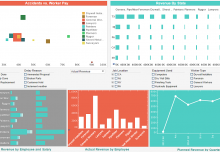This post is the fifth in a series discussing a machine learning use case for a mobile app provider. The link to the full case study can be found at the end of the post. The first post can be found at https://www.inetsoft.com/blog/machine-learning-concepts-defining-churn-predictive-metrics/
This sounds like an intimidatingly technical topic to someone who is not a data scientist, but in fact, it’s not hard for business people to understand the concepts of the various algorithms used in machine learning basics. You could treat machine learning as a black box where you do not even know what it is using inside to give you the best answer, but it is rather useful to know what the black box can do for you.
Actually, the black box approach and software advancement has begun to allow non-technical users like marketers to do self-service machine learning experiments. A basic understanding allows a business person to map tasks on hand on to the type of machine learning algorithm to experiment with. It also allows effective collaboration with data scientists or data engineers.
This particular machine learning churn case study utilizes an algorithm called a gradient boosted decision tree. Decision tree algorithms belong to a type of machine learning algorithm called “classification”. Classification, like the name implies, classifies each observation into a predefined class.
In this use case, it assigns a user into one of two “churn” classes. In the model training step, business users first label a set of users into the churn classes, and then let the machine learning algorithm study the data set to figure out how to do the same classification automatically.
Classification falls under a category called supervised learning since the training dataset is coded with the answers by a supervising human. There are many algorithms within the classification category. The choice of which classification algorithm to use is typically done through iterative experimentation picking the one with the highest accuracy rate.
Machine learning is a wide field even for technical oriented people. But for common business applications, most frequently used algorithms concentrate in a few categories. Some are useful for business applications but are not as accessible. In other words, they require elaborate technical infrastructure and/or deep technical expertise to apply. The next few machine learning primer articles will focus on accessible, business application oriented algorithms.
The full case study can be found at https://insidebigdata.com/2017/04/14/predicting-mobile-app-user-churn-training-scaling-machine-learning-model/
The next post in the series is at: https://www.inetsoft.com/blog/machine-learning-algorithm-primer-learning-by-example/







